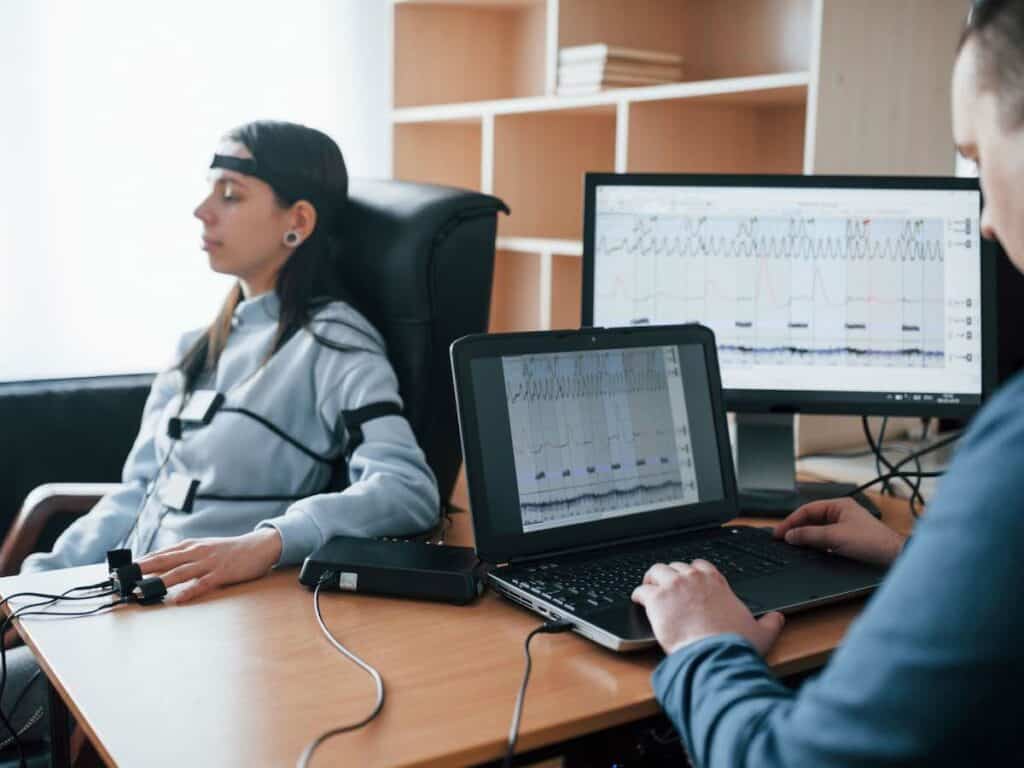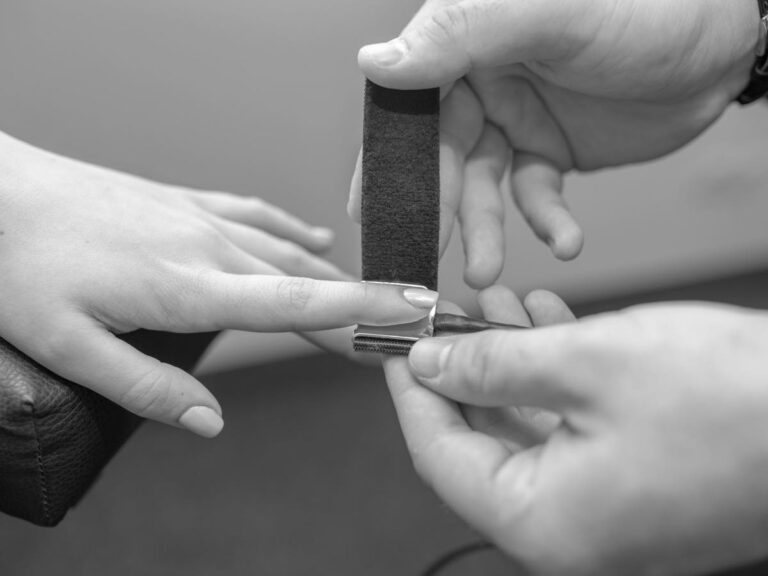8 Reasons When Lie Detector Test Can Be Wrong
A lie detector test is given to detect any deception. It’s been around for more than 100 years now, but is polygraphy 100% accurate?
Polygraphs are wrong if they result in a false positive (a truthful person reported as deceitful) or a false negative (a deceitful person reported as truthful). There are many reasons why lie detector tests can be wrong, including a lack of preparation of the subject or polygraph examinee and the misreading of the chart by the polygrapher or polygraph examiner.
According to proponents, polygraph tests are 80% to 90% reliable.
Critics, meanwhile, say that polygraphy has higher chances of it being wrong all the time. But it’s important to note that naysayers regard inconclusive results as an error, which isn’t right.
An inconclusive polygraph result, simply put, means that the individual who administered the polygraph was unable to come up with a diagnosis definitive enough to say whether the subject passed or failed the exam. It’s neither wrong nor correct, and the lie detector test has to be taken again on another day, which usually yields a more conclusive result.
Below, we will talk about 8 reasons that can cause a false positive or a false negative.

1. Lack of Training and Experience of the Polygraph Examiner
Not anyone who owns a polygraph machine can operate the instrument properly and come up with reliable reports.
The requirements to become a licensed or registered polygraph examiner can vary from state to state. In most instances, it’s a must for the individual to have attended an accredited school and successfully completed a polygraph training program. Depending on the job or agency, a bachelor’s degree is the minimum requirement at times.
In some states, however, polygraphers need not have a license.
Because of the nature of the work, the person who wants to administer lie detector exams for a living should possess truthfulness, integrity and moral fitness.
He or she should have never been convicted of a felony or misdemeanor involving moral turpitude.
With so many things to consider, it can be challenging to find the right polygraph examiner for the job at times. In order to make the task easier, ask whether or not the individual is a member of the American Polygraph Association (APA) or any other national or state association of professional polygraphers.
To become a member, the examiner must meet minimum standards. The same is true for keeping their membership status intact — they have to continually comply with certain requirements.
Having a license from the designated polygraph licensing board or agency, for instance, is most likely one of the primary requirements of an association based in a state where lie detector examiners must be licensed. Usually, applicants must also have administered a minimum number of polygraph tests under the supervision of a professional.
With very little to no training and experience, it’s not unlikely for the test report to be wrong.
2. Countermeasures From the Examinee
Strapped to a lie detector machine, the least a completely innocent person would want is to fail. On the other hand, a totally innocent person would want nothing but to pass.
This is why some examiners perform certain things on purpose in order to get the result they like.
In the world of polygraph testing, anything that you can deliberately do in an attempt to influence or defeat a lie detector examination is referred to as a countermeasure. While effective, countermeasures are useless in the presence of a polygraph examiner with sufficient training and experience.
Not all countermeasures examinees can do during a lie detector exam are the same. There are 2 types of countermeasures in terms of how they are implemented:
- Premeditatedly – the examinee has planned to use countermeasures
- Spontaneously – the examinee has not planned to use countermeasures
Online, there is never a shortage of posts on how to defeat a polygraph test — each of their suggestions is considered a countermeasure. It’s not illegal for an examinee to perform countermeasures while undergoing a lie detector exam. However, it can warrant another test, which consumes time and money.
Some of the most popular countermeasures include:
- Altering one’s breathing
- Thinking of something other than the exam questions
- Placing a tack in the shoe and pressing the toe against it
- Biting the tongue
- Digging the fingernails into the palm of the hand
3. Failure to Properly Prepare the Examinee for the Exam
Refrain from assuming that as soon as you step foot in the testing center or when the examiner arrives in the workplace you will be immediately hooked up to the lie detector machine and asked all sorts of questions.
A polygraph examination is made up of 3 distinct phases:
- Pre-test phase
- In-test or test phase
- Post-test phase
Each and every phase is important. And what makes the pre-test phase a critical part of the exam is that it’s where the examiner collects information relevant to both the case and examinee as well as completes the necessary paperwork. It’s also during this phase when the examinee is prepared for the test.
The pre-test phase is typically the longest part of an entire lie detector exam. It can take anywhere between 45 and 90 minutes to complete — that’s up to 75% of the total time of a 2-hour polygraph test!
There are many things that the examiner does during the pre-test phase. And some of them include:
- Ensuring that the examinee understands why he or she is being asked to take the exam.
- Providing the examinee with a detailed explanation of the polygraph machine and test itself.
- Informing the examinee that the test will be video and audio recorded.
- Determining whether or not the examinee is fit to undergo the examination.
Without proper preparation, it’s likely for the examinee to be anxious throughout the test, which can cause an error. It’s also very much possible for the examiner to fail to interpret the readings properly if he or she is not aware of the examinee’s medical condition or medications that can potentially affect the chart.
4. Improper Assessment of the Examinee’s Emotional and Physical Condition
Above, we just talked about the fact that the examiner must figure out beforehand if it’s suited for the examinee to take a lie detector test. Because of the considerable impact of the individual’s condition emotionally and physically on the result of a polygraph examination, it deserves to be discussed further.
Nothing is calming and relaxing about being subjected to a lie detector test. The report afterward, after all, can put all sorts of things at risk — from job opportunities to relationships to one’s clean criminal record.
Of course, it’s normal for the examinee to feel nervous.
Being anxious, unfortunately, can cause even the most truthful person to end up getting a false positive result. The same is true when he or she is stressed — the physiologic readings a polygraph machine would get are likely to be the same as what it would obtain from someone who is trying to beat the examination.
During the pre-test phase, it’s also important for the administrator of the polygraph test to ask the examinee about any medical condition he or she is diagnosed with.
High blood pressure, congestive heart failure, diabetes, rheumatoid arthritis, alcoholism and various mental illnesses such as generalized anxiety disorder (GAD) and post-traumatic stress disorder (PTSD) — these are just some examples of medical conditions that can cause physiologic readings that can be easily interpreted as signs of deception.
As a matter of fact, even pregnant women are prohibited from taking a lie detector test.
But if it’s really necessary for the examination to be conducted, a medical condition should not stop a seasoned examiner from administering one — establishing clear baseline readings is the key.
5. Equipment Malfunction
Other than the examinee, the examiner also has to prepare the polygraph machine for the test.
One of the most important tasks of this phase that needs to be performed by the individual who will administer the examination is to calibrate the instrument to check that it’s in excellent working order. Not only will this allow the examinee to have peace of mind but also give the examiner the confidence that the most accurate report can be made.
In order to measure and record the various physiologic processes or responses of the person strapped to it, a polygraph machine comes with all kinds of sensors.
How many sensors it has can vary anywhere from 4 to 6, depending on the model.
Failure of any of the sensors attached to the examinee’s body to work properly is enough to result in an error — incorrectly recording the number heart beats per minute or the degree of skin conductivity, for instance, can make a truthful person appear deceitful and a deceitful individual seem truthful.
It’s a good thing that the vast majority of polygraphers these days use a computerized lie detector machine, which is so much easier to calibrate with the help of its own companion software.
Besides making sure that the machine is in tip-top shape, calibration is also done during the pre-test phase to:
- Let the examinee see that the polygraph instrument can accurately determine the truthfulness.
- Obtain adequate physiologic readings and establish that the examinee is suitable to take the exam.
6. Poorly Worded Test Questions
The number of questions asked by the polygraph examiner during the test phase or question and answer portion of the exam can range anywhere from a few as 3 to as many as 10.
Either way, one thing remains true: all questions are answerable with a yes or no.
It’s of utmost importance for the questions the examinee has to answer to have definite objective answers. Similarly, they may not be opinions. The examiner has to make sure that the wording of each and every question must possess only a single interpretation that will not confuse the examinee and affect his or her physiologic processes.
So, in other words, the questions should not necessitate the person undergoing the lie detector test to expound on his or her answer — questions pertaining to politics or religion, for instance, are a no-no.
A poorly worded test question can have many possible answers, which a simple yes or no cannot justify.
It can also keep the examinee from completely understanding the question. And because the individual feels obliged to blurt out an answer despite not knowing whether a yes or no is the right one, his or her stress levels are likely to increase. Needless to say, it can easily be misinterpreted as an act of dishonesty.
Take a look at this sample question: “Did you ever cheat on your wife?”
What if the examinee had a first wife? What if the cheating happened before the examinee married his current wife? Because a polygraph examiner asked a poorly worded question, the honest examinee might appear to be deceitful, which could put the marriage in shambles.
Instead of the above-given sample question during an infidelity lie detector test, a good question would be: “Since you married (wife’s name), have you had sexual intercourse with anyone other than (wife’s name)?”
7. Misinterpretation of the Data on the Charts
Once the pre-test and test proper phases of a lie detector examination are through, it’s time for the examiner to analyze the data collected by the polygraph machine while its various sensors are attached to the examinee’s body.
In this day and age where computerized polygraph instruments are used, the chart interpretation part, in many instances, can be done solely by a software tool. However, nothing can replace the interpretation done by a human, particularly somebody who went to a polygraph school and has conducted a lie detector test many times in the past.
Unfortunately, just like any machine such as a computer, a human can commit errors, too.
Interpretation of the polygraph chart usually involves a comparison of physiologic responses to various questions: control, irrelevant and relevant questions.
Each type of question can help establish the readings when the examinee is telling the truth or stating a lie. An irrelevant question, for instance, can be anything that requires the person to be nothing but truthful. Is your name (name of the examiner)? Are the lights in the room where you’re currently in switched on?
And then there’s a control question, which is something that can elicit intense physiologic reactions such as when a person is lying. So, in other words, it can either force the examinee to lie or find the question uncomfortable to answer. Have you ever stolen anything from the workplace? Have you ever kept a secret from your parents?
A good polygraph examiner will not leave the data collection task to the machine solely.
Throughout the test, he or she will also observe the examinee’s eye movements, facial expressions, posture, breathing pattern, hand gestures and others. Taking note of them can cause the readings obtained by the lie detector instrument to make more sense, thus allowing the examiner to interpret the data on the charts more confidently and accurately.
8. A Lack of Quality Control Review
The entire polygraph examination, ideally, does not end with the examiner’s interpretation of the chart. There has to be what’s referred to as a quality control review (QCR).
Simply put, a QCR is a critical review and assessment of the lie detector exam result, which is conducted by an independent entity such as another polygraph examiner or an expert in a related field like a forensic psychophysiologist. So, in a way, it’s just like the primary lie detector administrator getting a second opinion.
A QCR is indispensable in assessing both the validity and reliability of the initial report made.
Seeking an independent evaluation of the result is SOP before it is submitted to the court where a lie detector test has admissibility or to the employer where a polygraph examination is a part of the pre-employment screening process, such as if the private company is providing security services or dispensing prescription drugs.
With the right QCR, it can be determined whether or not the conclusion of the examiner is substantiated by the readings measured, collected and recorded by the polygraph machine.
Needless to say, it can help keep an error at bay and save the examinee from unnecessary stress and worry.
Just Before You Have Your Lie Detector Test
Despite what critics say, a lie detector test has an accuracy of anywhere from 80% to 90%. So, in other words, the chances of your exam’s result being wrong are actually quite small. But because it involves the use of a machine and requires the interpretation of a human, a polygraph test is not at all infallible.
Above, we talked about some of the things that can cause a lie detector test to be wrong.
Because some of them can be blamed on the person administering the test, it’s important that you choose a polygraph examiner wisely. Look for one who has a license if the state requires local polygraphers to have one. Don’t be too shy to ask if he or she went to an actual polygraph school and has completed an accredited program.
During the exam, do your best to stay calm and collected even though being strapped to a lie detector machine can be in fact nerve-racking. And keep in mind that, as always, being honest is the best policy.






